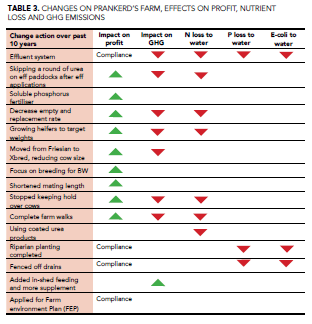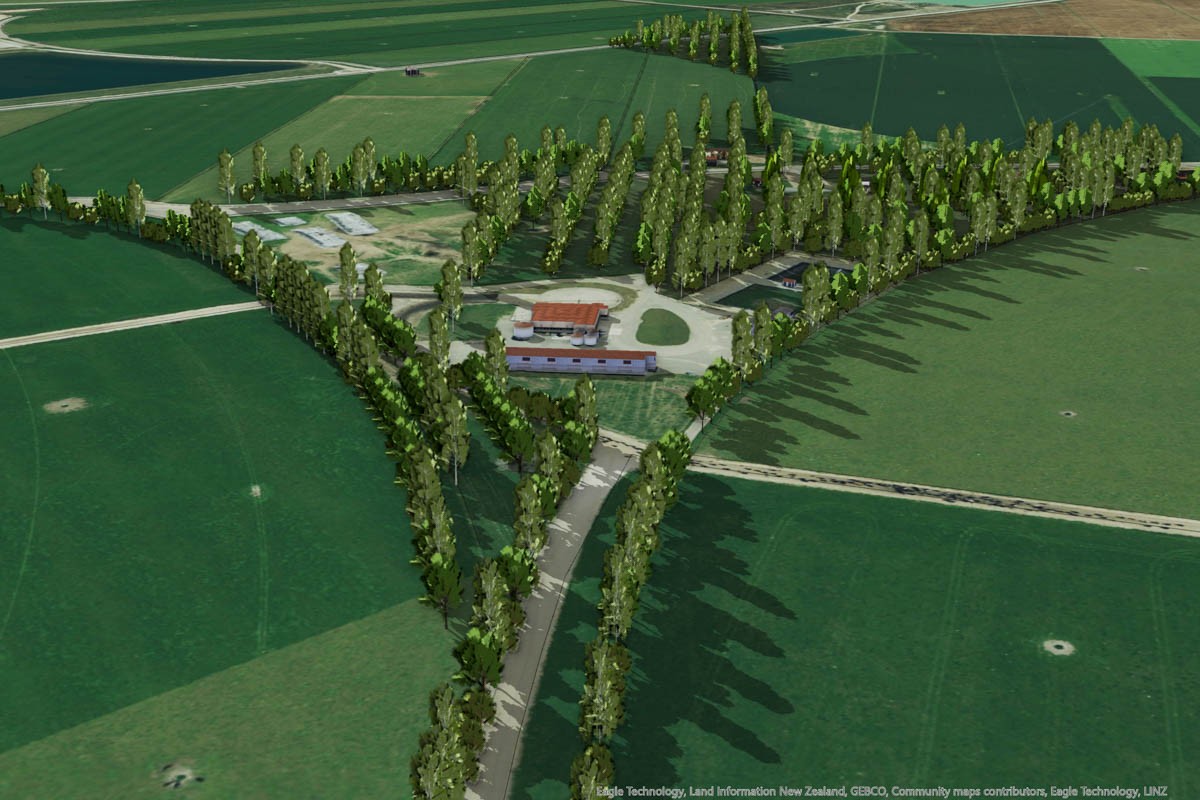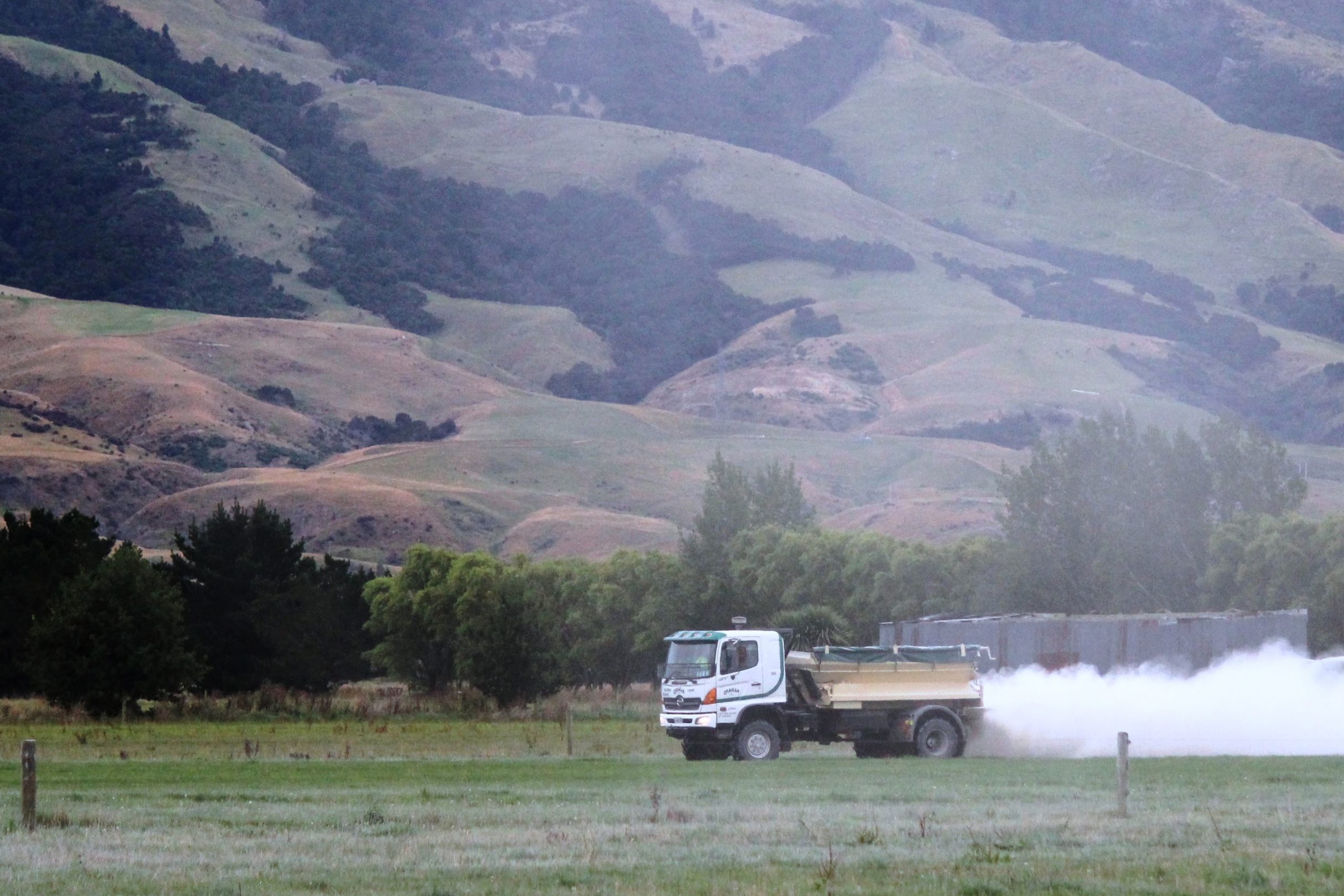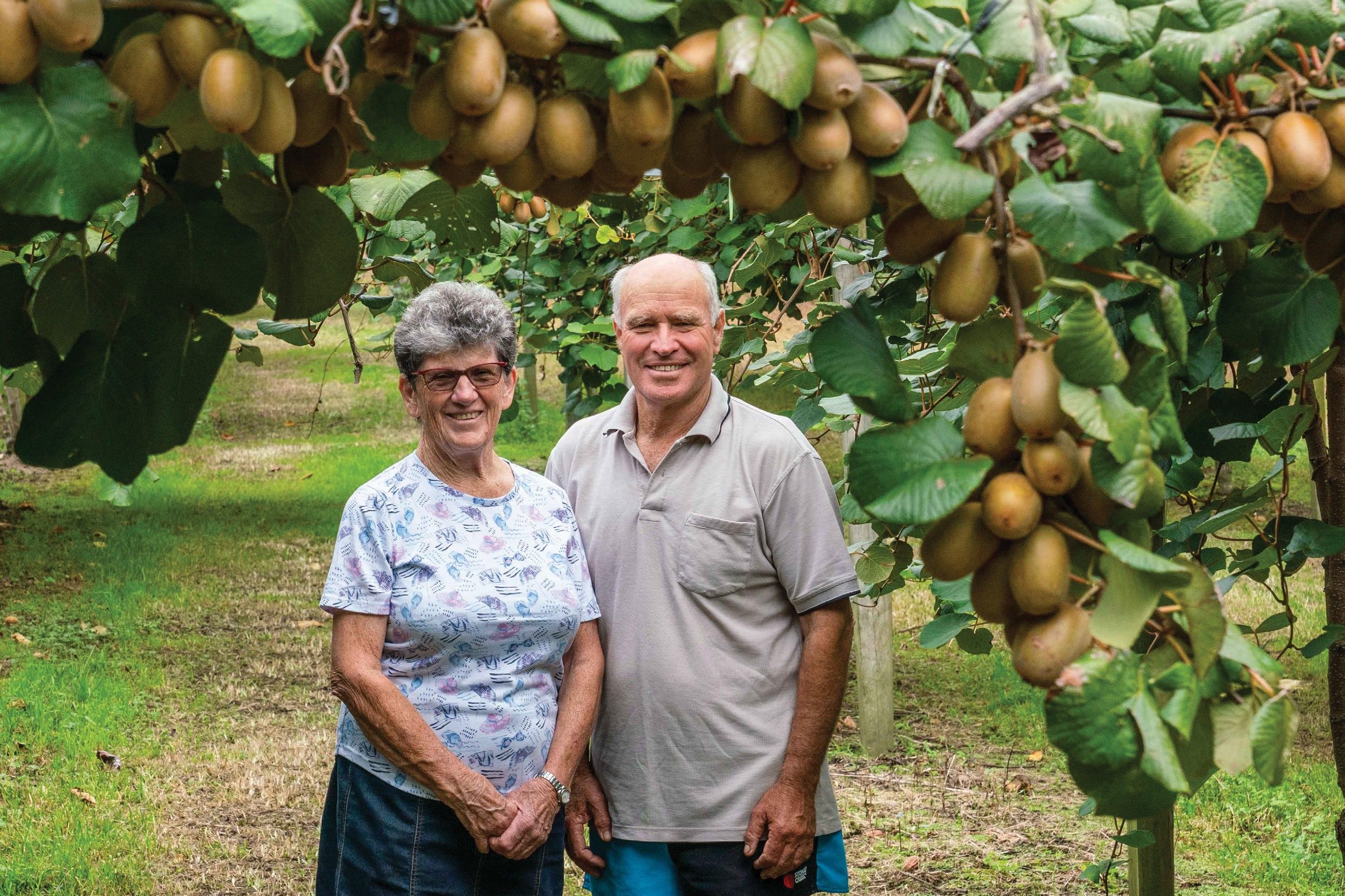Weaning the farm off bought-in nitrogen has improved profitability and set up a Taranaki operation for reduced greenhouse gas emissions. By Jackie Harrigan
Taranaki dairy farmers Chris and Kathy Prankerd admit they started the Stepchange project when they were DairyNZ Monitor farmers for three years back in 2011.
They have been changing and improving their farm systems ever since.
The Tariki couple have farmed the central Taranaki property on the flanks of Mount Taranaki for the past 40 years and while they say the monitor farm process was hard to be in the spotlight, it certainly helped improve their herd reproductive performance and farm profitability.
The monitor farm programme, with weekly visits (“that kept us accountable”) and crowds of local farmers (“that made me practice public speaking”) was a trial but Chris and Kathy appreciated what they learned and lifted their profitability.
“We installed a weighing system once we realised how hard it was to guess accurately the weight of our replacement heifers and how off the mark our guesses were.
“Measuring and monitoring the young stock led to better-grown heifers with better reproduction rates and a huge lift in milk production.
“We also realised that our big Friesian cows were too big causing a high empty rate, so we bought in crossbred heifers to change the breed.”
Measuring and monitoring pasture production also led to a similar increase in pasture utilisation and adding in-shed feeding a few years later further helped to ensure the cows were fully fed in the high-rainfall environment.
A governance course in 2014/15 gave the pair confidence and more tools.
After Chris being in the cow shed every day for more than 40 years (having started when he was just 12 years old milking for his dad) they employed manager Noel Kilpatrick.
Noel was a relative newcomer to the industry, and relished the challenge of learning as much as he could when he left a supermarket career and embraced farm life.
Importantly he and his wife Fiona being on the farm allowed Chris and Kathy to get away from the farm, to catch up with their five children (three of them farming) and indulge their love of outdoor pursuits like tramping and cycling.
Noel and Fiona have taken on the contract milking job this season and allowed Chris and Kathy to take a further step back.
Reducing nitrogen
 Two years ago a new effluent system was added to the operation, allowing small applications through a rain gun over 26 hectares. Whole-farm paddock-level soil testing has identified where the fertiliser spend is best invested.
Two years ago a new effluent system was added to the operation, allowing small applications through a rain gun over 26 hectares. Whole-farm paddock-level soil testing has identified where the fertiliser spend is best invested.
“We used to chuck on the nitrogen to fill the gaps, now we only apply 15-20 units of nitrogen each time.
“We dilute the N by growing more grass, using small amounts and then growing more grass and utilising it effectively.”
In the high-rainfall environment potash is needed as it disappears from the soils quickly, Chris says.
They now know nitrogen fertiliser is not needed in the effluent area if effluent has been applied in the latest round.
Increasing production has reduced purchased N surplus from 114kg N/ha down to 96kg N/ha with a target of 89 for the 20/21 season.
This level puts them within the A quadrant in the Stepchange programme, with operating profit above $3500/ha with purchased N surplus below 120kg N/ha/year.
Rejigging reproduction
 Chris and Kathy have focused on improving reproduction rates, ever since the Monitor Farm project identified that their young stock were not performing to expectations.
Chris and Kathy have focused on improving reproduction rates, ever since the Monitor Farm project identified that their young stock were not performing to expectations.
“We bought weigh scales and spent a good few years weighing heifers and growing them out better to reach targets,” Chris says.
The couple realised their cows were too big so they bought replacement heifers to start changing the breed to Kiwicross and now have cows averaging 480-500kg producing an average of 460kg milksolids (MS)/year.
“We have also bred for PW for the last five years.”
BW is now 121/49 and PW sits at 144/42.
Drying-off no later than May 20 has helped them preserve body condition in the herd, as has the strategy of moving to 16-hour milking in January and February and going once-a-day on April 10.
“We don’t lose too much production but we can keep condition on the cows, especially if it gets dry.”
Shortening the length of the mating from 12 weeks to 8.5 weeks has increased profitability by lifting six-week-in-calf rate (from 73% to 78% in 2018/19) and getting more milk in the vat earlier in the season, Chris says.
He also admits to weaning himself off his old habit of keeping hold-over cows on the runoff and using them again the following year.
“I used to keep all my empty young cows on the runoff, it gives them another chance… but I have realised that we were building on the infertility – we would hold them over, might get another calf and then they were empty again – it was a bad habit that wasn’t helping our reproduction.”
The Prankerds usually rear about 20% replacement heifers, but if heifer numbers were a bit short there was always the temptation to hold over some empty heifers to boost numbers but didn’t help the fertility of the herd.
GHG elephant in the room
With a GHG emissions profile of 7.67 tonnes CO2-e/ha, Chris and Kathy are already sitting in the A quadrant for Operating Profit vs. Methane Emissions.
So in terms of challenges and reducing GHG by 10% by 2030 Chris says the options are slim.
“The cheapest things for us to do would be to pull out the meal feeders in the dairy shed, because it is the most expensive feed. But the insheed feeding system has been invaluable to get minerals into the cows as well as for when the grass growth slows.”
Putting zinc through the feeding system means each cow gets enough to cover facial eczema risk, Chris says.
“We are trying to feed 2kg a day but if grass growth slows we can dial it up to 5kg meal – we can ensure the cows are on a rising plane of nutrition leading up to mating which has really helped our repro results.”
The only other real option will be to drop cow numbers, he says.
Planning to calve 275 cows and milk 265 peak cows next season, Chris says that equates to the 2.65 cows/ha stocking rate they have been working towards.
Because winter is wet (and annual rainfall averages 3000mm at Tariki) the Prankerds move 190 cows down the road to their support block to winter, further down the mountain with lower rainfall and free-draining soils.
“We need to capture the advantage of having 190 cows off the farm for six weeks by having enough mouths to take care of the spring flush so we are not embarrassed with grass!”
So while the evolution to higher efficiency has been a journey the family have embraced, they will be well-placed to make educated steps to bringing GHG emissions down.
“We know our numbers and we know where we sit, we will see how it plays out and make decisions then.”
Drymatter intake (DMI) drives methane production
Reducing feed reduces methane emissions.
Options for reducing drymatter intake:
- Less purchased supplement
- Less nitrogen boosted pasture and crop, providing total DMI reduces
- Reducing maintenance by producing the same amount of milk from fewer cows
- Fewer heifer replacements
- Eliminating the ‘hold over’ practice
- Improve feed quality = 1 MJME n per kg DM reduces energy requirements 5%





